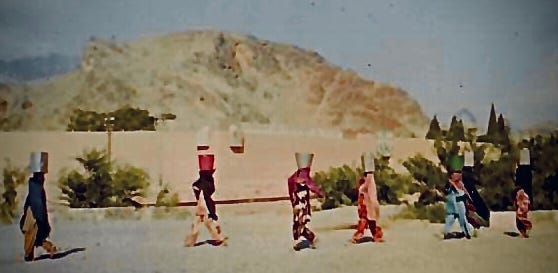Introduction
In my post Created To Lead: Paradigm of Humanity, I described a three-part way of understanding ourselves as human beings. I borrow from the history and tradition of the Christian faith to describe how we can understand ourselves as:
created Imago Dei,
living imago Christi
recognizing that gloria Dei est homo.
In this essay, I am going to take each of those terms and use a story from the New Testament to illustrate three core values that can be identified when we see leadership as “personal initiative to create impact that makes a difference that matters.”
The core values are:
Dignity Leading to Transformed Identity
Ethical Character Leading to Peace and Unity in Society
Living a Life of Honor and Respect to the Creator
In the first instance, I am using the story of Jesus’ encounter with the Samaritan woman. In the second, I am using the conflict in the Church at Corinth. In the third, I use a passage from Paul’s letter to the church at Ephesus to show that our lives have been created with purpose ready to be lived out.
STORY ONE
Jesus meets a woman at a well.
Pakistani women go to the village well.
Peshawar, Pakistan July 1981
I read the text from John 4.
From many different angles this is a wonderful, fascinating story. Jesus and his disciples are traveling through a region where they are not welcome and have stopped at a place for rest and nourishment. They are in Samaria where they are forbidden to interact with Jews. Jesus is resting by a well around midday. A woman with a water jar arrives. She would look like one of the women in the above picture.
Jesus sees the woman and immediately knows the core feature of her story. The woman has come to the well at the hottest time of day instead of in the cool of the morning when the other women of the village come. She is an outcast in the village.
Jesus breaks social norms by asking the Samaritan woman for a drink of water. They enter into a conversation about the water that Jesus offers. Jesus make it personal without also making it judgmental. The woman who is used to social rejection does not want to talk about her sordid life with men. She would rather talk about religion as an abstraction.
Jesus persists and brings her to realize who he is. The character of this story is that it follows the story where he was with his family at a wedding in Cana. The wine runs out at the party. Jesus’ mother, Mary, knows who he is, not just her son, but the Son of God. She tells him to take care of the problem. He responds to her, “Woman, what concern is that to you and to me? My hour has not yet come?” At this intimate moment with his mother, family and friends in Cana, he tells her it is not time for him to declare who he is as the Messiah sent from God. Two chapters later, he is in Samaria, where he does not belong, talking to a woman of ill repute, rejected by her community, and he tells her who he is. This is not how most people will announce their campaign to be the Jewish Messiah.
Their conversation goes like this.
“The woman said to him, ‘I know that Messiah is coming’ (who is called Christ). ‘When he comes, he will proclaim all things to us.’
Jesus said to her, ‘I am he, the one who is speaking to you.’”
He chooses this woman to reveal himself. This doesn’t make sense if the purpose of revealing his calling was to create a spectacle of celebrity to challenge the authorities. Instead, he tells a woman that no one respects. As important as this beginning part of the story is, it is only the beginning.
If the paradigm of humanity that I’ve described is accurate, then each person, regardless of background or reputation has the potential to be a person of impact. If you take personal initiative to create impact, you are looking to create change. Whether the woman’s motivation was to be a person of impact is not known. What is clear is that her life was changed in a manner noticeable by the people of the village. She leaves her water jar behind and goes into town to tell the people who treated her with disrespect about this man who did. She has a story to tell. In telling it, she impacts the community where she was once an outcast. The people of the town listen to her. They must have seen something about her that was so different they could not ignore it. So, they leave town and come to the well to see who this man is who had this effect upon this woman. This is a picture of leadership impact
CREATED TO LEAD:
THE IMAGO DEI AND HUMAN FULFILLMENT
Part Two: Paradigm of Humanity
Part Three: Relationships of Impact
1 - Jesus Meets a Woman at a Well




